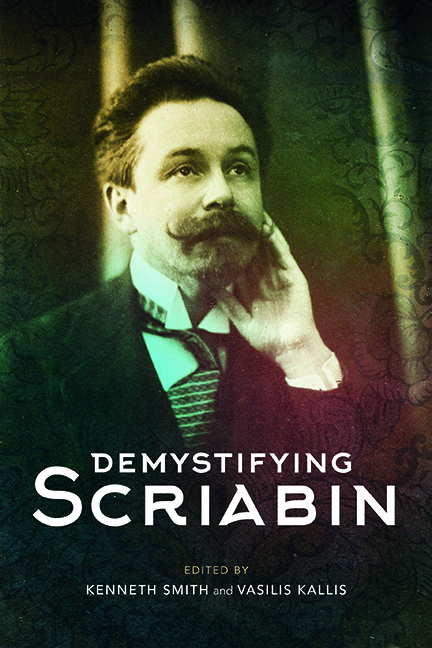5 - Studying Scriabin’s Autographs: Reflections of theCreative Process
Published online by Cambridge University Press: 07 October 2022
Summary
In 2011 a group of musicologists from Moscow launched aproject of preparing the ‘Alexander ScriabinCollected Works’. Although Scriabin's music wasregularly published in Russia and the USSR, thisbecame the first attempt to represent all the worksby the composer in one collection. To date, eight oftwelve volumes have been issued by Muzyka – P.Jurgenson Publishers, with an editorial board headedby one of the leading composer biographers of thelate twentieth century, Dr. Valentina Rubt͡sova. TheA. N. Scriabin Memorial Museum and the RussianNational Museum of Music, both situated in Moscow,are partners of the project. In this chapter I usethe Alexander ScriabinCollected Works (ASCW) as a case study,using the manuscripts and other sources as a lensthrough which we can glimpse a deeper understandingof Scriabin's creative process.
Autographs and Editions
This is the epoch of the urtext edition. Few can arguethat since the first 1895–9 Urtext classischerMusikwerke series, the particular method ofpreparing a scholarly edition has evolved to becomethe prevailing system of printed music production.Two remarks should be added to obtain a broaderpicture. Firstly, there are also other types ofeditions, like the interpretative ones, still in useand occupying their niche. And secondly, there is agreat variety within the urtext editions themselves.The diversity, however, arises from the basicprinciple of representing the composer's intentionas fully and clearly as possible before theinterpreter's perception. Easy to sum up in onesentence, this guideline involves differentgroundwork activities appropriate for the legacy ofdifferent composers or even certain pieces by asingle author. The crucial task that editors face isto define a pool of sources that they considertrustworthy. As described by Gustav Henle, itremains the responsibility of the editor to choosewhich source to follow.
Sometimes, sole reliance on the composer's autographcan prove valuable. The advantages of this methodhave led musicologists like James Webster toconclude that a historically informed performanceshould only be carried out from a facsimile edition,sinсe there is no way to reproduce the composer'smarkings in the printed variant. That could be avery proper attitude for the music of theRenaissance or Baroque but cannot be applied to allcases. Many autographs are lost, and the copies donot match one another.
- Type
- Chapter
- Information
- Demystifying Scriabin , pp. 81 - 96Publisher: Boydell & BrewerPrint publication year: 2022



